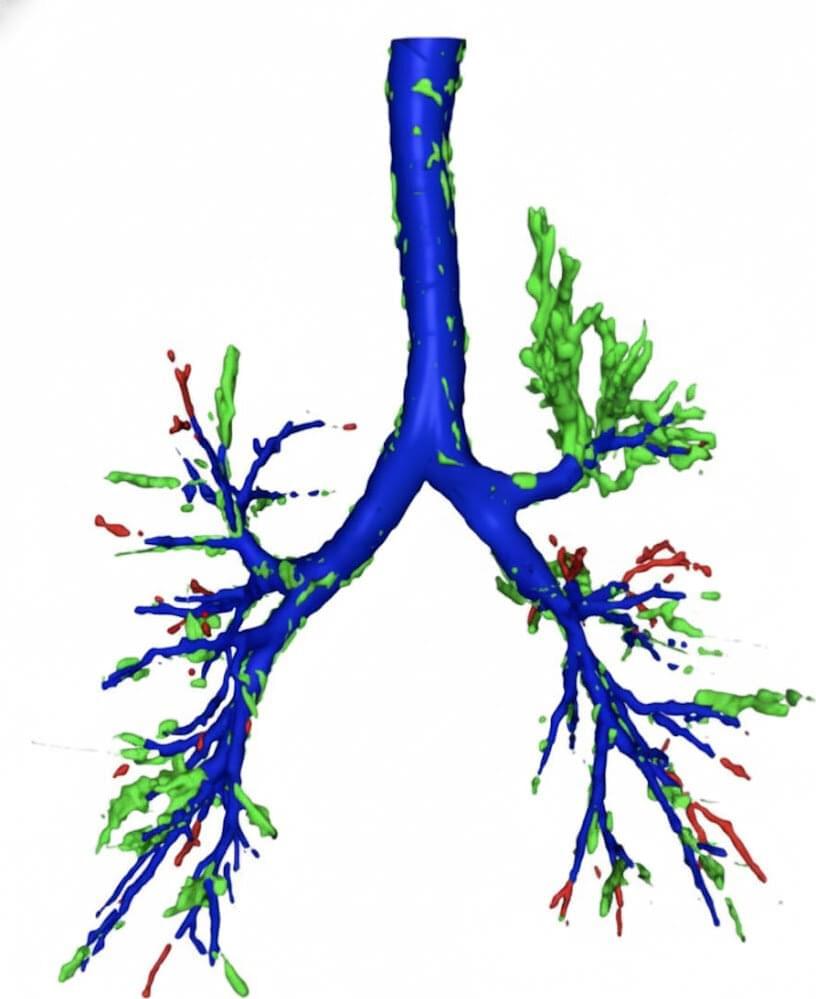Executive Summary Semiconductors are the foundational technology enabling virtually every aspect of contemporary economic activity, from artificial intelligence and cloud computing to medical devices and…


Check out Neurosity to code with your brain waves — https://neurosity.co/fireship.
I gave Claude Code full access to my mind to find out if it’s really possible to vibe code straight from the dome using the Neurosity Crown. Let’s run it…
#coding #programming #tech.
💬 Chat with Me on Discord.
🔗 Resources.
Timur Bazhirov, Mat3ra.com CEO, presenting Mat3ra for Electron Microscopy. At Mat3ra, we’re bridging the gap between experiment and theory, starting with elec…

Doug Philippone, co-founder of Snowpoint and former head of global defense at Palantir, will also join Valar’s board of directors.
Valar is one of several nuclear startups that hopes to benefit from President Trump’s push to deploy new reactor technology in the U.S. by cutting regulations and accelerating approvals.
Based outside Los Angeles, Valar is one of several reactor developers and states that are suing the Nuclear Regulatory Commission over its licensing process for small reactor designs. The parties to the suit are seeking a resolution with the NRC in the wake of Trump’s executive order that would overhaul the regulator. The case has been temporarily paused due to the government shutdown.
The rich in the U.S. just keep getting richer. Over the five decades, incomes have risen materially faster at the very top than anywhere below, and similarly, wealth has accumulated much more quickly at the top than anywhere below. A report from the Stone Center On Socio-Economic Inequality (at CUNY) looks at the mutually-reinforcing relationship between these two dynamics…
Homoploutia describes the situation in which the same people (homo) are wealthy (ploutia) in the space of capital and labor income in some countries. It can be quantified by the share of capital income rich who are also labor income rich. In this paper, we combine several datasets covering different time periods to document the evolution of homoploutia in the United States from 1950 to 2020. We find that homoploutia was low after World War II, has increased by the early 1960s, and then decreased until the mid-1980s. Since 1985 it has been sharply increasing: In 1985, about 17% of adults in the top decile of capital income earners were also in the top decile of labor-income earners. In 2018 this indicator was about 30%. This makes the traditional division between capitalists and laborers less relevant today. It makes periods characterized by high interpersonal inequality, high capital-income ratio, and high capital share of income in the past fundamentally different from the current situation. High homoploutia has far-reaching implications for social mobility and equality of opportunity. We also study how homoploutia is related to total income inequality. We find that rising homoploutia accounts for about 20% of the increase in total income inequality in the United States since 1986…
Note that the report was written in the 2020 (and published in The Review of Income and Wealth in 2023). The dynamic has continued since; the polarizing impact has grown.

IBM Quantum Nighthawk is IBM’s most advanced quantum processor to date, engineered specifically to achieve “quantum advantage” by the end of 2026—when a quantum computer can solve a practical problem better than any classical-only method. Key capabilities.
An inside look at how IBM® is using state-of-the-art 300mm semiconductor fabrication technology to build the future of quantum hardware.

New research comparing four different flu vaccines found that the ability of the vaccines to activate cells of the immune system that help to protect against infection varied greatly depending on the vaccine type and age of the patient. Researchers say these findings have the potential to guide vaccine recommendations, especially for older adults.
The 2024–2025 flu season was considered highly severe, causing at least 47 million illnesses, 610,000 hospitalizations, and 27,000 deaths.
A new study, published in The Journal of Immunology, found that while all four seasonal influenza vaccines produced similar antibody levels, their ability to activate cellular immunity varied greatly depending on the vaccine type and age group.

Neurodegenerative diseases, such as Alzheimer’s disease and dementia, are medical conditions that entail the progressive loss of neurons and a decline in brain function. Past studies have found a link between these diseases and the buildup of misfolded proteins, such as tau and α-synuclein.
Tau is a protein found primarily in neurons that typically helps to stabilize structures that transport nutrients and molecules within neurons, known as microtubules. α-synuclein, on the other hand, is a small protein located at the tips of neurons (i.e., pre-synapses), which typically helps to regulate the function of synaptic vesicles, small sacs that release neurotransmitters across synapses.
While these proteins have an important function in the healthy brain, their abnormal aggregation has been found to be a hallmark of several neurodegenerative diseases. The molecular processes that prompt their accumulation, however, have not yet been fully elucidated.

In an MIT classroom, a professor lectures while students diligently write down notes they will reread later to study and internalize key information ahead of an exam.
Humans know how to learn new information, but large language models can’t do this in the same way. Once a fully trained LLM has been deployed, its “brain” is static and can’t permanently adapt itself to new knowledge.
This means that if a user tells an LLM something important today, it won’t remember that information the next time this person starts a new conversation with the chatbot.

Researchers at the University of Southampton have developed an artificial intelligence (AI) tool that can spot hard-to-see objects lodged in patients’ airways better than expert radiologists.
In a study published in npj Digital Medicine, the AI model outperformed radiologists in checking CT scans for objects that don’t show up well on scans. The paper is titled “Automated Detection of Radiolucent Foreign Body Aspiration on Chest CT Using Deep Learning.”
These accidentally inhaled objects can cause coughing, choking, difficulty breathing and sometimes lead to more serious complications if not treated properly.